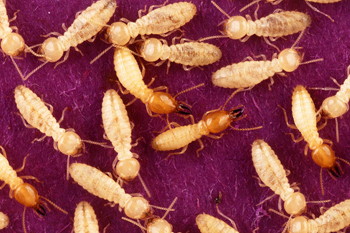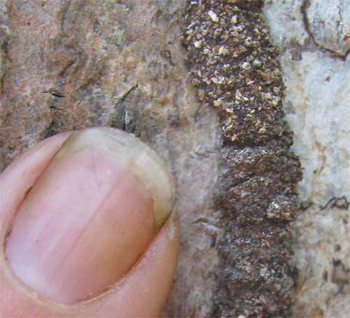



Termites

Name: Subterranean or Dry wood Termite
Size: Termites vary in size. A typical colony contains nymphs (semi-mature young), workers, soldiers, and reproductive individuals of both genders, sometimes containing several egg-laying queens. On avarage termites are about the size of ants.
Habitat: Nests are commonly built underground, in large pieces of timber, inside fallen trees or atop living trees. Some species build nests above-ground, and they can develop into mounds. Termite workers build and maintain nests to house their colony. These are elaborate structures made using a combination of soil, mud, chewed wood/cellulose, saliva, and faeces. A nest has many functions such as to provide a protected living space and to collect water through condensation.
Food: Termites mostly feed on dead plant material, generally in the form of wood, leaf litter, soil, or animal dung, and about 10% of the estimated 4,000 species (about 2,600 taxonomically known) are economically significant as pests that can cause serious structural damage to buildings, crops or plantation forests. Termites are major detrivores, particularly in the subtropical and tropical regions, and their recycling of wood and other plant matter is of considerable ecological importance.
Danger:
Due to their wood-eating habits, many termite species can do great damage to unprotected buildings and other wooden structures. Their habit of remaining concealed often results in their presence being undetected until the timbers are severely damaged and exhibit surface changes. Once termites have entered a building, they do not limit themselves to wood; they also damage paper, cloth, carpets, and other cellulosic materials.

The above photo is of subterranean termite shelter tubes. Sometimes you may find the mud tube running up the foundation of your home or tubes coming out of the ceiling or walls.
Some Links to information about termites:
Photo Credits:
Termites - Scott Bauer, USDA (Public Domain). Shelter Tube - Jim Conrad (Public Domain).The information on this page was taken from Wikipedia under a GNU Free Documentation License unless otherwise noted.









